When faced with needing a new house key without the original, one might navigate several challenges. The absence of an original key can make duplicating a new one seemingly impossible, leaving homeowners concerned about security and access. Having spare keys is crucial for various situations, such as emergencies, accommodating guests, or when keys are lost. In such instances, it becomes imperative to understand “how to make a house key without original.”
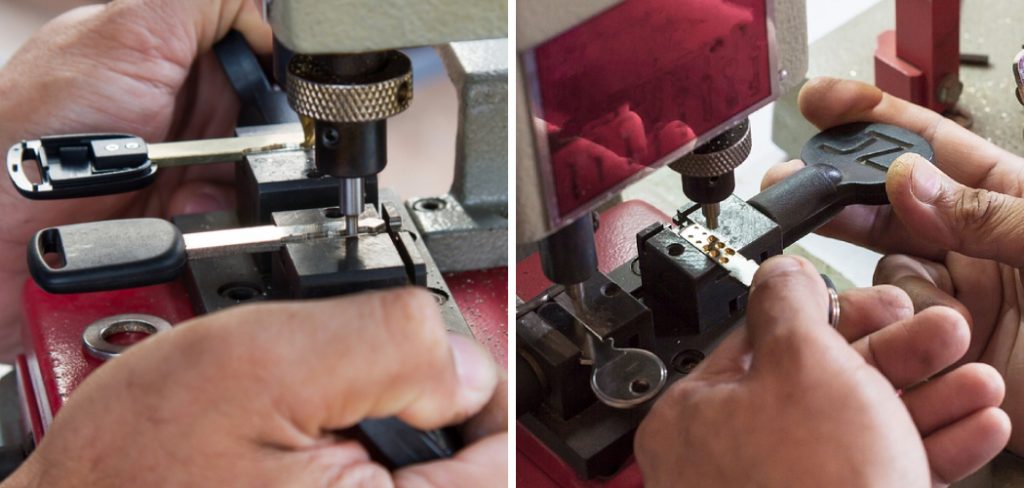
Fortunately, several methods can be pursued to solve this dilemma. Professional locksmith services offer a reliable solution, using specialized tools and expertise to create a new key. Alternatively, lock rekeying is a practical approach that involves altering the lock mechanism to work with a new key. DIY options are available for the adventurous at heart, though they require a careful approach and some know-how to ensure success.
Understanding Your Lock System
Types of Locks
In most homes, you’ll encounter several common types of locks, such as traditional pin-tumbler locks, deadbolts, and smart locks. Pin tumbler locks are widely used due to their reliability and ease of use; they work by aligning pins with a shear line inside the lock cylinder to allow the key to turn. Deadbolts provide an additional layer of security with a locking bolt mechanism that extends deeper
into the door frame, making it more resistant to forced entry. Smart locks represent a technological evolution, allowing for digital or remote unlocking via smartphone apps or code entry pads. When attempting to make a new key, understanding the type of lock is crucial, as each has different mechanisms and complexities.
Identifying Your Lock Brand
Knowing the brand of your lock is essential because each manufacturer often has specific key designs and mechanisms. The lock brand can usually be identified by a name or logo stamped on the lock face or included within the owner’s manual. Recognizing the brand helps in determining the right approach to crafting a new key and ensures compatibility with the lock’s mechanisms. Even slight variations in key shape or size can impact usability, stressing the importance of accurate identification.
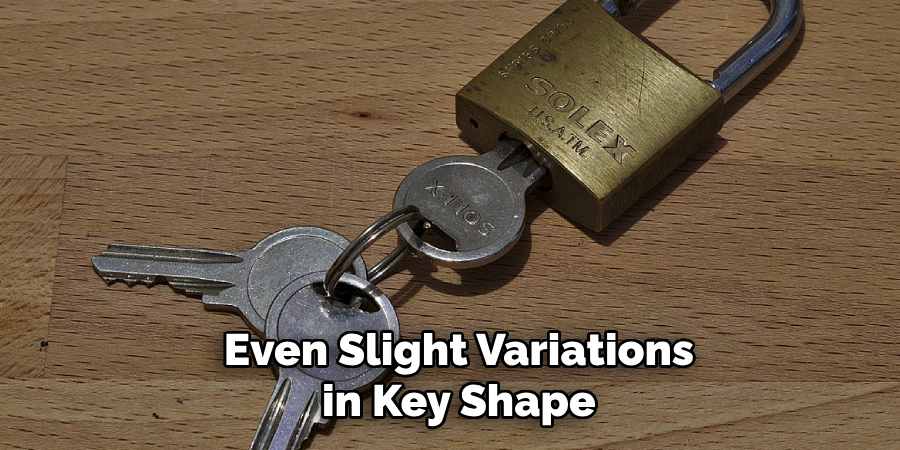
Key Codes and Cut Numbers
Many locks are designed with key codes—numbers or series corresponding to the key’s specific cutting pattern. These codes can significantly aid in recreating a key without the original. Key codes might be located on a tag attached to the original key, inside the lock cylinder, or recorded in the owner’s manual. Understanding how to find these codes can simplify the process of making a new key, as they provide a blueprint for the precise cuts required to operate the lock efficiently.
How to Make a House Key without Original: Seeking Professional Help from a Locksmith
When finding yourself locked out or unable to create a new key independently, contacting a locksmith is often the most reliable solution. Several situations warrant calling a locksmith, such as losing your keys, facing a jammed or broken lock, or needing a new key without the original. Locksmiths possess the expertise required to handle these issues effectively, ensuring swift access to your home
without causing damage to the lock. With their specialized tools and knowledge, locksmiths can create a new key directly from the lock, a task only achievable with substantial experience.
Finding a reputable locksmith involves a few key steps to ensure the safety and security of your home. Start by reviewing online testimonials and ratings for local locksmith services to gauge the quality and reliability of their work. Recommendations from friends or family who have had positive experiences can also guide you. Additionally, verify the locksmith’s licensing and accreditation to ensure compliance with local regulations and check that they have experience
working with your specific type of lock. This verification is crucial to ensure that they cannot only address your immediate needs but also maintain the integrity of your lock system.
Regarding costs, hiring a locksmith for key duplication services typically ranges from $50 to $150. The price varies depending on the complexity of the lock and the time required for the job. The process begins with the locksmith examining the lock to understand its design and mechanism. If necessary, they may carefully disassemble the lock to determine the specific requirements for the new key.
Once the lock’s intricacies are understood, the locksmith uses their skills to craft a new key that aligns perfectly with the lock’s internal structure, restoring your ability to secure and access your home without issues.
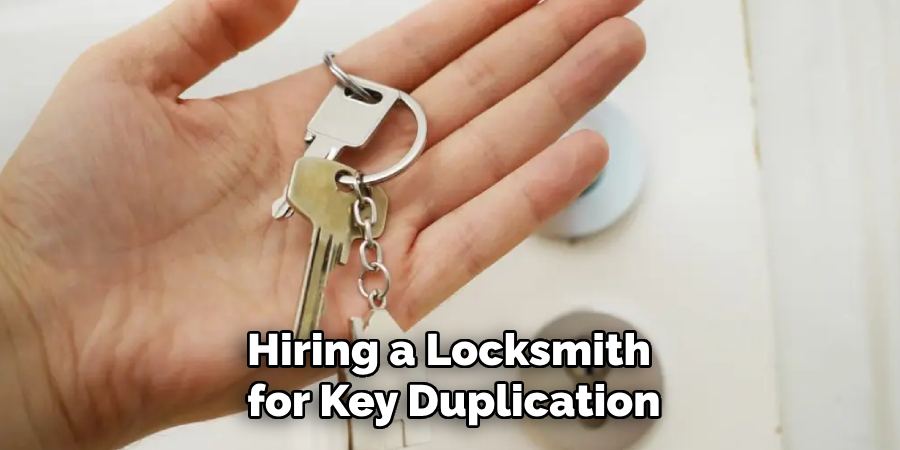
Rekeying Your Locks as an Alternative
What is Rekeying?
Rekeying is a security technique where the internal components of a lock are adjusted to work with a new key, effectively rendering the old key obsolete. Unlike replacing a lock entirely, rekeying involves altering the pins inside the lock cylinder so that only the new key can engage the lock mechanism. This process maintains the lock’s exterior hardware while modifying its inner workings, making it a cost-effective solution.
Benefits of Rekeying
Rekeying offers several advantages, notably increased security and enhanced control over access to your home. By ensuring that old keys cannot operate the lock, rekeying eliminates the risk of unauthorized entry from previous residents, contractors, or anyone who may have had access to the old key. Homeowners can manage and restrict entry to trusted individuals by choosing who receives the new key.
When to Consider Rekeying
Consider rekeying your locks in several scenarios, such as when moving into a new home, after losing a key or if a key is stolen, and following significant life changes like a breakup or a change in roommates. Rekeying is also a prudent choice if you’ve given out spare keys to service providers or temporary guests and want to ensure they can no longer access your home.
Costs and Professional Help
Rekeying services typically range from $20 to $50 per lock, making it an affordable option for improving security. If you’re considering hiring a locksmith, remember they will have the specialized tools and expertise required for rekeying, ensuring the task is done accurately and efficiently. It is advisable to verify the locksmith’s qualifications and experience with the specific type of locks in your home to ensure they can carry out the process without compromising your security.
DIY Key Making Without an Original Key
Several different methods can be used to create a new key without the original, each with its own set of requirements and advantages.
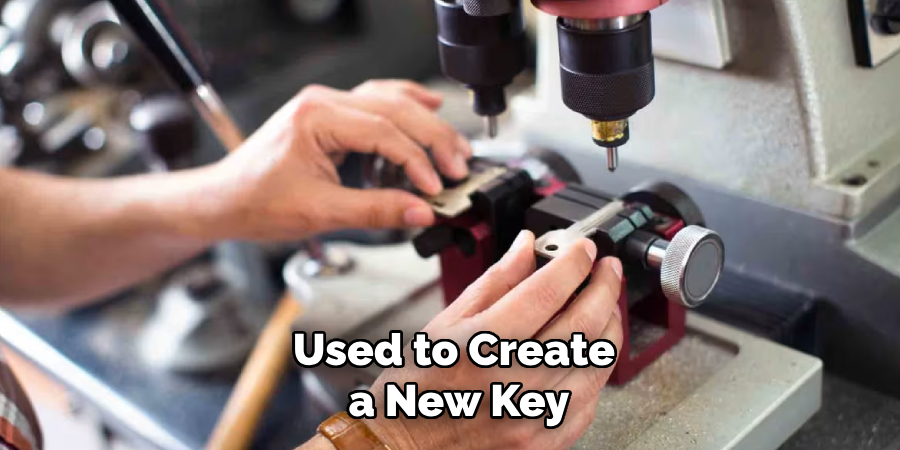
Using a Key Blank
Key blanks serve as the foundation for crafting a new key. These uncut keys come with a standardized shape that matches various lock types. When selecting a key blank, it is crucial to identify one that aligns perfectly with your lock’s brand and model. Key blanks are readily available at hardware stores, locksmiths, or online marketplaces. To identify the correct key blank, observe the shape of your lock’s
keyhole and reference the lock brand and any existing keys for clues on compatible blanks. A mismatch in key blanks can result in a non-functional key and wasted resources.
Using a Locksmith Key Service
Utilizing a locksmith’s key service is an effective approach when a key needs to be created from a lock code. Some locksmiths offer duplication services based on the lock’s specific code, which can often be obtained from the lock’s manufacturer or by examining the lock itself. To use this service, gather necessary information such as the lock brand, model, and any visible key code. Presenting
this information to a locksmith enables them to cut a new key precisely, adhering to the specifications required to fit your lock perfectly.
Online Key Replacement Services
Online services provide a convenient alternative for key replacement without the original key. These services typically involve submitting information about your lock, including its brand, model, and key code. After processing this data, the service crafts a new key and delivers it by mail. While convenient, these services carry potential risks. It is essential to ensure the received key’s compatibility with
your lock and to assess the security implications of sharing lock information online. Proper research can mitigate these risks, but caution is advised when protecting your home’s security.
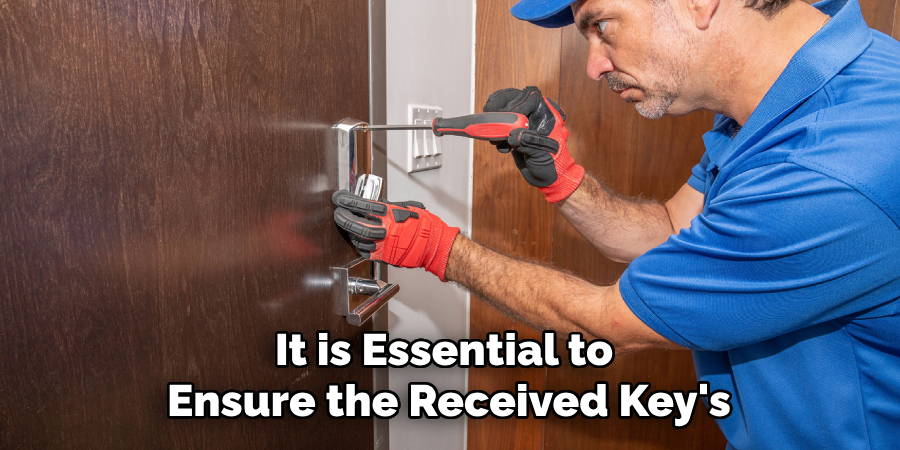
Preventing Future Key Losses
Creating Spare Keys
Creating spare keys as a preemptive measure can save time and stress in case of key misplacement. Distributing these spare keys to trusted friends or family members who can provide access during an emergency is wise. Consider methods such as lockboxes or discreet hiding spots within your property for safe storage. Be sure the spare key isn’t easily found by potential intruders yet accessible enough for those you trust.
Using Key Tracking Devices
Key tracking technology offers a smart solution for preventing key loss. Devices like Bluetooth trackers—including Tile or Apple AirTag—can be attached to your keyring. These tools effectively track lost keys using a smartphone app. To utilize these devices, follow the manufacturer’s instructions for setup, typically involving pairing the tracker with your phone via Bluetooth. Once set up, if keys go missing, you can use the app to locate them within a certain range, reducing the hassle of searching.
Establishing a Key Management System
An organized key management system helps avoid confusion and misplacement. Labeling each key clearly with its purpose or location can prevent mix-ups. It’s important to regularly check your key inventory, ensuring all necessary keys are accounted for and functional. This check should involve testing each key in its respective lock periodically to confirm they operate smoothly. An organized approach contributes to enhanced security and efficiency in managing your keys.
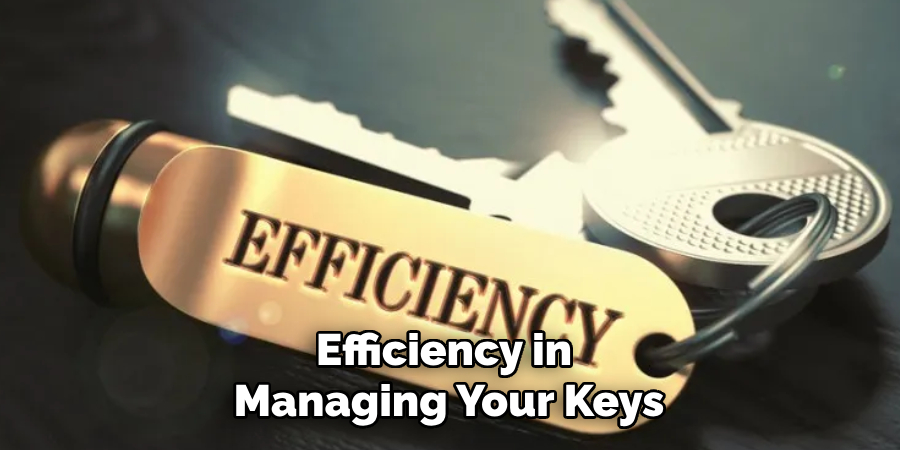
Conclusion
Understanding how to make a house key without original access is crucial for maintaining a secure and accessible home. This document has highlighted various methods to achieve this, including utilizing locksmith services to cut new keys from lock codes, rekeying to regain control over your lock system, and exploring DIY options such as using key blanks. Each method has its own
advantages and conditions for success, emphasizing the importance of understanding your specific lock type and circumstances. Being proactive about key management, such as creating spare keys and employing key tracking devices, significantly enhances your ability to address key loss without compromising security. Ultimately, ensuring your home is both secure and accessible demands informed decision-making and readiness to address key-related challenges effectively.
About
Safety Fic is a distinguished figure in the world of Diy design, with a decade of expertise creating innovative and sustainable Diy solutions. His professional focus lies in merging traditional craftsmanship with modern manufacturing techniques, fostering designs that are both practical and environmentally conscious. As the author of diy, Safety Fic delves into the art and science of Safety Fic-making, inspiring artisans and industry professionals alike.
Education RMIT University
(Melbourne, Australia) Associate Degree in Design (Safety Fic) Focus on sustainable design, industry-driven projects, and practical craftsmanship. Gained hands-on experience with traditional and digital manufacturing tools, such as CAD and CNC software.
Nottingham Trent University
(United Kingdom) Bachelor’s in diyfastly.com and Product Design (Honors) Specialized in product design with a focus on blending creativity with production techniques. Participated in industry projects, working with companies like John Lewis and Vitsoe to gain real-world insights.
Publications and Impact
In diy, Safety Fic his insights on indoor design processes, materials, and strategies for efficient production. His writing bridges the gap between artisan knowledge and modern industry needs, making it a must-read for both budding designers and seasoned professionals.
